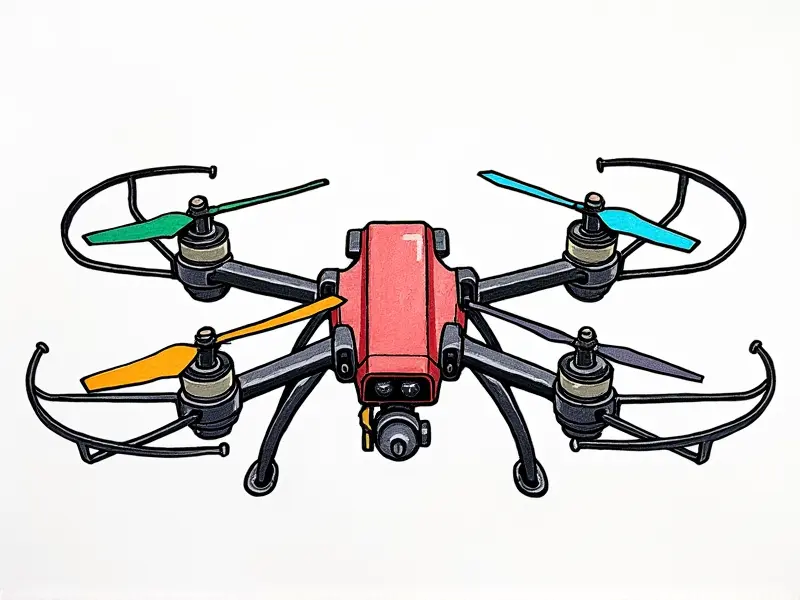How do drones communicate?

Drones have become an integral part of various industries, from aerial photography and videography to agriculture and search and rescue operations. A critical aspect of drone functionality is their ability to communicate wirelessly with ground stations or other drones. This article delves into the intricacies of drone communication, exploring how they transmit data, video signals, and command instructions.
How Do Drones Communicate Wirelessly?
Drones use a variety of wireless technologies to communicate over short-range distances. The most common methods include radio frequency (RF) and Wi-Fi communications. RF is the preferred choice due to its reliability in open-air environments, while Wi-Fi offers higher data transfer rates for certain applications.
Understanding Drone Radio Signals
The heart of drone communication lies in radio signals. These signals are transmitted through antennas on both the drone and the ground station, allowing real-time control and data exchange. The quality and range of these signals depend largely on factors such as frequency band, antenna type, and environmental conditions.
What Frequencies Do Drones Use?
Drones typically operate within specific radio frequency bands to avoid interference with other devices. Common frequencies include 2.4 GHz and 5.8 GHz for Wi-Fi communications, and 900 MHz or 1.2 GHz for RF-based systems. Each band has its advantages in terms of range, penetration through obstacles, and susceptibility to interference.
Drone Communication Protocols Explained
To ensure seamless communication between drones and ground stations, standardized protocols are essential. These protocols define the rules for data transmission, error correction, and security measures. Popular drone communication standards include MAVLink, Dronecode Protocol (DPC), and OcuSync.
How FPV Drones Transmit Video
Fully-featured drones equipped with First Person View (FPV) capabilities use specialized video transmitters to send live footage back to the operator. These transmitters operate in specific frequency bands, such as 5.8 GHz or 1.2 GHz, and can achieve high-definition resolution for immersive viewing experiences.
Basics of Drone Command Signals
Command signals are crucial for controlling drone movements and functions. Ground control stations send these commands via radio waves to the drone’s onboard receiver. Commands include throttle adjustments, yaw control, pitch and roll maneuvers, as well as camera settings like zoom and tilt.
Drone Signal Interference: Causes & Fixes
Interference can significantly degrade drone communication quality, leading to lag or even loss of signal. Common causes include physical obstructions, electromagnetic interference from other devices, and overlapping frequencies with nearby drones. To mitigate these issues, users should employ directional antennas, use higher frequency bands for clearer signals, and ensure proper spacing between drone operations.
Enhancing Drone Range and Quality
To maximize the range and quality of drone communications, several strategies can be employed. Using high-gain antennas increases signal strength and penetration through obstacles. Additionally, optimizing flight paths to avoid interference-prone areas and maintaining a clear line-of-sight between the drone and control station are key.
Inside Drone Data Transmission
Data transmission in drones involves not only video but also telemetry data such as GPS coordinates, altitude readings, battery status, and more. This information is critical for navigation and safety purposes. Efficient data compression techniques and robust error correction algorithms ensure reliable data transfer over long distances.
RF vs. WiFi in Drone Comm
The choice between RF and Wi-Fi technologies depends on the specific requirements of the drone application. RF offers better range and reliability, making it ideal for outdoor use where line-of-sight is crucial. Wi-Fi provides faster data transfer rates but may suffer from reduced range and increased interference in crowded environments.
Securing Drone Communication Links
Ensuring secure communication links is vital to protect sensitive data and prevent unauthorized access. Encryption protocols like AES (Advanced Encryption Standard) can be implemented to safeguard transmitted information against eavesdropping or tampering attempts.
Conclusion
The world of drone communication is complex yet fascinating, encompassing a range of technologies and strategies to ensure reliable performance. By understanding the underlying principles of radio signals, frequency bands, and security measures, users can maximize their drones' capabilities and achieve optimal results in various applications.

